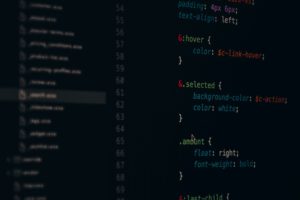How Tiny Machine Learning Could Drive a Big Revolution in Business

In our last post, an introduction to artificial intelligence (AI), we touched briefly on the promises of machine learning (ML). As a type of AI that transcends human intelligence to achieve results that would be difficult for humans to do, ML is uniquely suited to processing massive volumes of big data and getting better at processes over time. Through ML, computers actually learn to improve without human intervention.
The potential applications of ML are incredibly far-ranging, from smart thermostats to driverless cars. And now, the emerging field of tiny machine learning (tinyML) is making those applications more efficient, more portable, and more revolutionary for end users. Here’s how tinyML could drive a big revolution in business:
AI vs. Machine Learning vs. TinyML
Often, the term “artificial intelligence” is used interchangeably with “machine learning,” but ML is a subset of AI. ML is, in turn, an umbrella term that encompasses deep learning and tiny machine learning. All machine learning has in common is the ability to process massive volumes of data and deliver human-like operations based on that date.
For instance, the innumerable decisions and actions it takes for a person to drive a car safely have been transferred to self-driving cars through ML. These are not drones, driven remotely by human operators, but extraordinary machines analyzing real-time conditions and deciding how to respond most effectively. Similarly, deep learning is a subset of machine learning that replicates human decision-making by modeling the neural pathways in a human brain. Deep learning relies on neural networks to complete advanced analytical operations, such as image and speech recognition.
Finally, tinyML is a form of machine learning that makes it possible for devices to complete radically complex operations in increasingly constrained spaces while using less power. It exploits the “internet of things” (IoT) — the billions of devices collecting and sharing data via the internet — to shift data processing to smaller and smaller hardware units.
Bigger Big Data, Smaller Carbon Footprint
Historically, machine learning has required massive amounts of hardware to process the ever-increasing datasets generated by big data sources. As central processing units (CPUs) became inadequate and data centers became de rigueur for managing information needs, the carbon footprint of big data users expanded at an alarming rate. Seeking a more efficient alternative, organizations are increasingly looking at tinyML to help.
TinyML effectively prunes data architecture, eliminating unnecessary neurons and pathways and generating more efficient algorithms. As a result, operations that once required that data be sent to the cloud for processing can, through tinyML, be completed locally on a handheld device or smaller. More local data processing could curb the seemingly relentless expansion of data centers, thereby reducing the carbon footprint of data-dependent organizations.
TinyML Brings the Cloud Down to Earth
By moving data processing out of the cloud and into smaller devices, tinyML helps reduce the power requirements of those devices themselves. That is because uploading and downloading from the cloud is tremendously inefficient. Doing so quickly drains the battery on a smartphone, for instance, if that process is run through the phone’s CPU. So, if a device is constantly keyword spotting — waiting for a “wake word” that tells it to act — that background operation will consume an excessive amount of battery power. (A good example of a wake word/phrase is “Hey, Siri.”)
But if that keyword spotting process is disassociated from the cloud and instead completed on a special, low-power listening element embedded in the phone, the battery drain is minimal. Many “smart” devices, from light bulbs to remote weather sensors, can run for up to a year on a single coin battery.
TinyML is a Revolution In and Of Itself
The implications of such an autonomous device are enormous. A tinyML-empowered “rich sensor” that can register, record, transmit, and act upon complex weather data to adjust systems in the field without human intervention could revolutionize farming, forestry, construction, seismology, and a host of other industries.
By migrating data management away from “compute-centric” processes that require information to be warehoused in data centers and toward “data-centric” approaches that enable processing at the local, device level, tinyML has the power to make big data processing more efficient AND more portable. And that is a revolution in and of itself.
What Are the TinyML Possibilities for Your Organization?
TinyML is full of potential for organizations of all stripes, regardless of sector or industry. But it can also be overwhelming to consider all those possibilities. An AI-adept management consultant can help you better understand tinyML and its applications for your organization. Want to know more about how possibilities? Contact Momentum today.
 Tap to email
Tap to email
